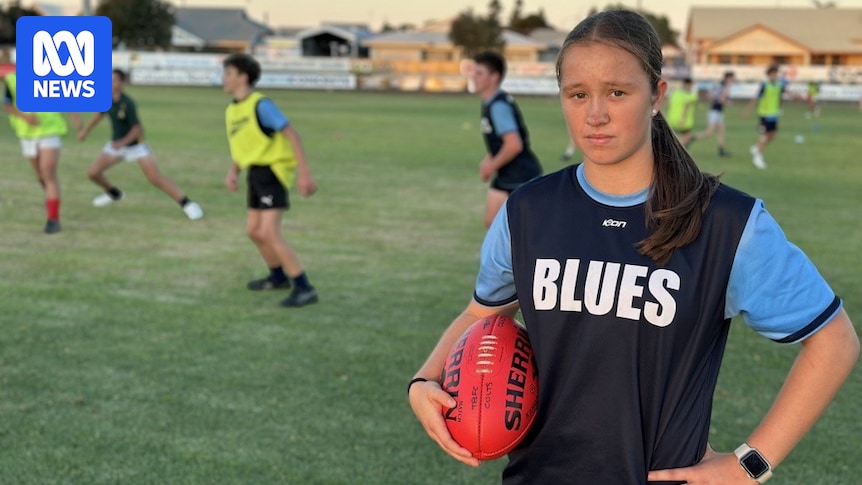
In a move that has sparked widespread controversy, one of Australia’s top female under-16 footballers, Lani Cocks, has been barred from playing in a boys’ Aussie rules competition on the Eyre Peninsula due to her gender. The decision was made following her standout performance as vice-captain for the Tumby Bay Under 16s, where she was named best on ground last Saturday.
Lani, who has played in the boys’ league since she was seven and was recently awarded the Most Valued Player (MVP) at the All-Australian Championships, is among several girls affected by this ruling. According to the Australian Football League (AFL) and modified South Australian rules, girls aged 15 and some aged 14 are no longer permitted to participate in boys’ competitions.
The announcement has caused uproar among local football clubs on the Eyre Peninsula, with many claiming they were not informed of the South Australian National Football League’s (SANFL) policy before the season began. Reports indicate that the news was delivered to some girls during a match last week, while others were informed after the first game of the season concluded.
Local Clubs and Players React
The decision has left many players and coaches frustrated, particularly as the affected girls had already paid to participate in the boys’ competition for the entire season. Lani expressed her disappointment, stating, “It was pretty upsetting coming off a high playing at a state level and then coming back excited to play with the boys again and then being told afterwards I couldn’t play.”
Robert Shirley, coach of the Cummins Ramblers Under 16s and a former AFL Crows player, echoed these sentiments. He was only informed this week that 15-year-old girls could not play. “Girls were able to register and pay without a problem up until round one, so why didn’t the SANFL pick up on anything about it happening until now?” he questioned.
“[It] has been handled very poorly and the ruling itself, I completely disagree with.” – Robert Shirley
Shirley’s team is now short two players, including his own daughter, Annabelle, who had hoped to play her last season of Under 16s under her father’s coaching. The ruling has raised concerns about the impact on country teams already struggling with player numbers and volunteer support.
Policy and Safety Concerns
While there is a women’s competition on the Eyre Peninsula, it does not align with the traditional winter season of Aussie rules. Outside of South Australia, AFL policy generally excludes females over the age of 14 from participating in non-female competitions.
Richard Murphy, SANFL community operations manager for the Eyre Peninsula, explained that the rules originate from the AFL, with the SANFL offering an additional year of exemption. “The policy is ultimately there to protect players for their safety and insurance reasons,” he stated. The SANFL allows girls aged 14 to apply for a permit to play in Under 16s for one year only.
Challenging the Scientific Basis
Michael O’Shea, a senior lecturer and interdisciplinary gender equity scholar at Western Sydney University, questioned the scientific rationale behind the policy. He argued that age and gender are not the only factors to consider in player safety and capability.
“Just because a boy is 16 doesn’t mean that his skill level is as good or better; it doesn’t mean that his playing history is the same or better; it doesn’t necessarily mean that his growth stage is any different to her’s nor [his] cognitive skill development or overall fitness.” – Dr. Michael O’Shea
O’Shea highlighted emerging research suggesting that age and gender are not the best indicators for determining appropriate competition levels, advocating for a more nuanced approach.
Future of Female Participation
Matt Duldig, SANFL manager, emphasized the league’s commitment to creating opportunities for female footballers across South Australia. However, he noted that this does not guarantee participation in boys’ leagues if suitable girls’ competitions are available.
“Exemptions are approved by the affiliated league of the player on a case-by-case basis, with the main consideration being whether there is an appropriate all-girls competition played within a reasonable distance that players can participate in.” – Matt Duldig
As the debate over gender and sports continues, the situation on the Eyre Peninsula highlights the challenges faced by female athletes seeking equal opportunities in traditionally male-dominated sports. The implications of this ruling may influence future policy decisions and the structure of youth sports leagues nationwide.





